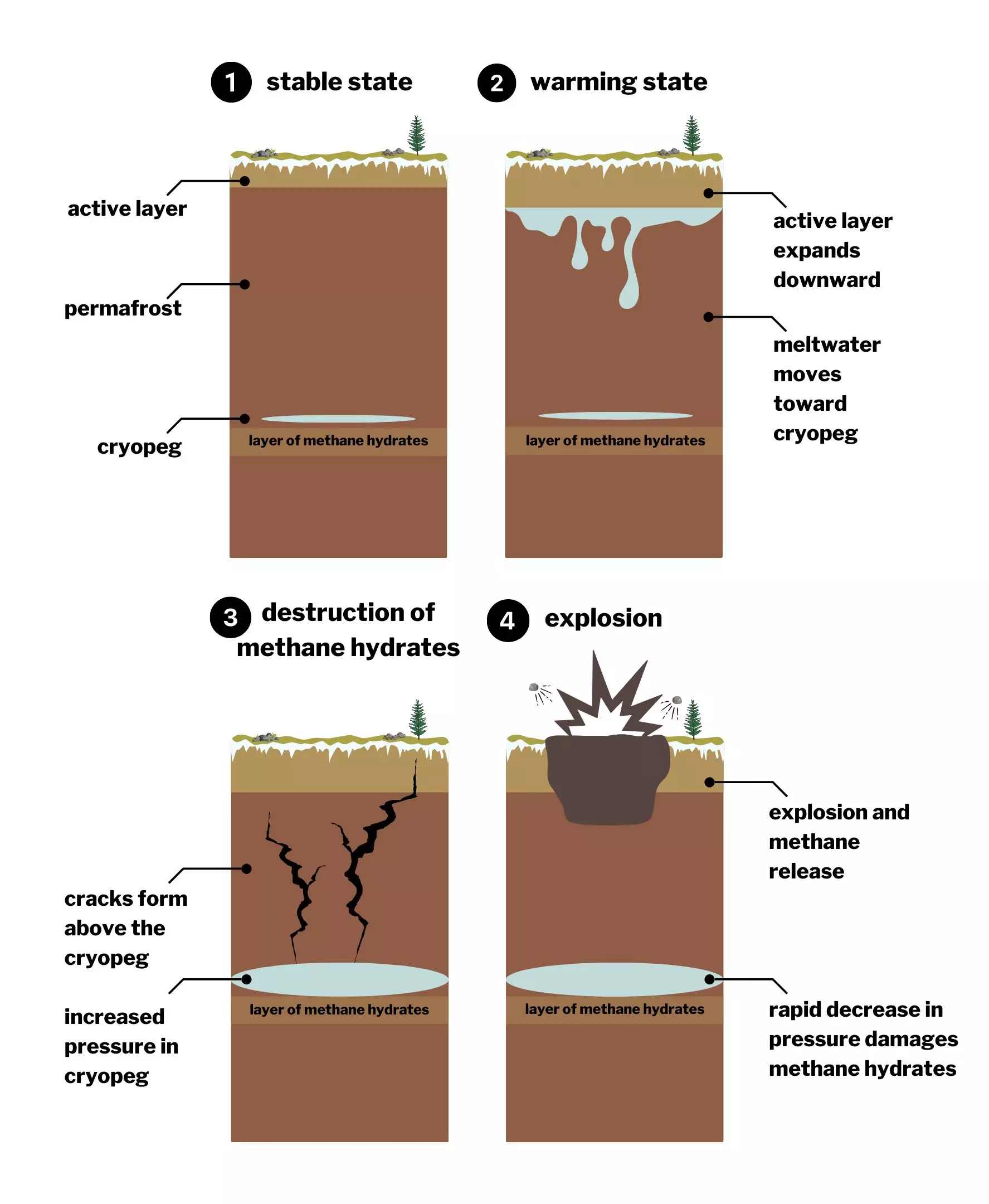In recent years, the appearance of enigmatic craters in the Siberian permafrost has captured the attention of scientists, researchers, and the public alike. These craters, first documented on the Yamal Peninsula in 2014, have sparked a debate surrounding their origins and the geopolitical implications of such phenomena. A recent study offers a comprehensive explanation for these geological oddities, attributing their formation to a confluence of climate change and specific geological conditions that lead to the explosive release of methane gas previously trapped underground.
The initial reports of a crater stretching approximately 70 meters (230 feet) in diameter marked a turning point in our understanding of permafrost dynamics and the role climate change plays in destabilizing these ancient geological formations. Over the years, additional craters have emerged, not only on the Yamal Peninsula but also on the Gydan Peninsula. As a result, a plethora of theories attempting to explain these violent outbursts has proliferated. However, the current research unveils a nuanced interplay between physical and chemical processes, highlighting the complexity of the natural world.
The Yamal Peninsula itself is characterized by unique geological conditions that set the stage for this phenomenon. A thick layer of permafrost, ranging from 180 to 300 meters (590 to 980 feet), acts as a form of insulation beneath an “active layer” of topsoil that thaws seasonally. Interspersed within this frozen expanse are layers of high-salinity water, known as cryopegs, sandwiched between the layers of ice and methane hydrates. The delicate balance of pressure and temperature allows these methane hydrates to remain stable. However, as the climate warms, this balance starts to tilt, leading to the destabilization of the hydrates and subsequent methane release.
Researchers emphasize that the warming process—though indisputably accelerated by human activity—creates a unique scenario in which pressure is built up due to the melting permafrost. This mechanism is critical in understanding how craters are formed. While some earlier hypotheses suggested that the craters might be explained solely through their proximity to natural gas reserves or out-gassing from warming permafrost, the current study demonstrates that these factors alone cannot account for the explosive nature of the events.
Understanding the Mechanism of Explosion
The driving force behind these explosive events is as much about physical processes as it is about chemical reactions. As scientists delve deeper into the study, they draw parallels to the mechanics of riding a bicycle; an over-inflated tire can burst due to excessive pressure. In the case of the Siberian craters, this pressure buildup occurs due to osmosis, where groundwater forced into confined spaces—like cryopegs—pushes out salty water, creating an environment ripe for rupture.
Ana Morgado, a leading figure in the study, likens the investigative process to detective work. Paying close attention to how methane hydrate layers are destabilized by pressure changes allows for a fuller understanding of the conditions that lead to explosive releases. The formation of cracks in the permafrost not only signals an impending explosion but sets the stage for the rapid transition in pressure from underground layers to the surface.
This comprehensive evaluation is not only critical for understanding the craters’ origins but also serves as an alarming indicator of how our changing climate may catalyze similar geological events elsewhere in the world. As the timeline of climate warming backs to the 1980s suggests, the connection between the increased occurrence of such phenomena and human-induced climate change is becoming increasingly evident.
The implications of these findings extend beyond the immediate geological concerns. The increasing prevalence of such craters in the Arctic could have profound implications for climate feedback loops, wherein methane—a potent greenhouse gas—enters the atmosphere in alarming quantities. With methane capturing heat at a rate significantly greater than carbon dioxide over short periods, its release could expedite climate change, leading to more severe weather patterns and ecological ramifications.
As further study is warranted, it’s important to recognize that such explosive occurrences might not be confined strictly to the Yamal Peninsula but could be indicative of larger, global trends related to permafrost dynamics. The exploration of these craters acts as a clarion call for further research into the interconnectedness of climate change, geology, and the resultant ecological consequences on a planetary scale.
The mysterious craters in Siberia are more than fascinating geological features; they serve as a stark reminder of the intricate relationships between our climate and the Earth’s geology. As scientists piece together these complex puzzles, the urgency of understanding and responding to climate change has never been clearer.

